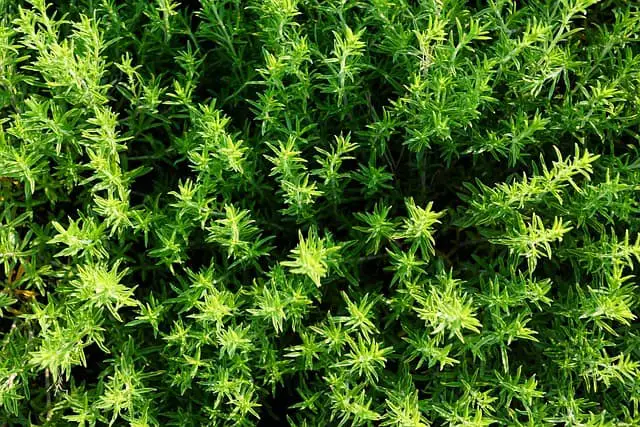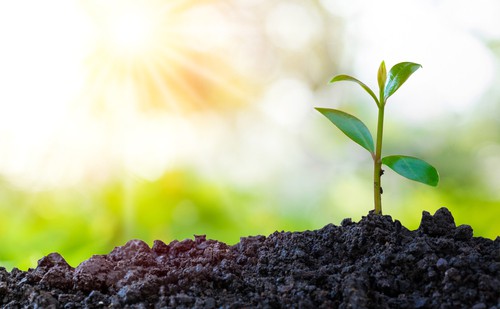Thyme is a popular herb that is widely used in cooking because of its strong, earthy flavor and aroma. However, it can be frustrating when thyme plants start turning brown. Thyme turning brown can indicate a variety of problems, from fungal diseases to improper watering, soil conditions, and aging.
Understanding the causes of thyme turning brown is crucial to preventing and solving the problem. One of the most common reasons for thyme turning brown is fungal disease caused by excess moisture around the roots.
Thyme is a Mediterranean herb that prefers somewhat dry conditions, so overwatering and slow-draining soils can promote the growth of fungal pathogens that cause thyme plants to turn brown.
Another reason for thyme turning brown is aging, as the plant naturally turns brown after two to three years, preparing for new growth on the tips of the stems.
Key Takeaways
- Thyme turning brown can indicate various problems, including fungal diseases, improper watering, soil conditions, and aging.
- Overwatering and slow-draining soils can promote the growth of fungal pathogens that cause thyme plants to turn brown.
- Thyme naturally turns brown after 2-3 years, preparing for new growth on the tips of the stems.
Check out these other top posts in this category:
Understanding Thyme

Thyme is a popular Mediterranean herb known for its aromatic leaves and culinary uses. It is a perennial herb that belongs to the mint family, Lamiaceae. Thyme is a hardy plant that can grow up to 12 inches tall and is commonly found in gardens and as a decorative plant in pots.
Thyme has a long history of medicinal and culinary uses. Its leaves are rich in essential oils, which are responsible for its distinct aroma and flavor. Thyme is commonly used in cooking as a seasoning for meat, soups, stews, and sauces. It is also used in herbal medicine for its antiseptic, antifungal, and antibacterial properties.
Garden thyme, also known as Thymus vulgaris, is the most common type of thyme used for culinary purposes. It has small, oval-shaped leaves that are grayish-green in color and a woody stem. Garden thyme is a perennial herb that can grow up to 15 inches tall and prefers well-draining soil and full sun.
Thyme is a hardy plant that can withstand drought and poor soil conditions. However, it is susceptible to fungal diseases caused by excess moisture around the roots.
Overwatering and slow-draining soils promote the conditions for fungal pathogens that cause thyme plants to turn brown. Regular pruning and harvesting can help prevent the plant from becoming woody and promote new growth.
Causes of Thyme Turning Brown
Thyme is a hardy herb that can withstand a variety of growing conditions. However, there are several reasons why thyme plants may turn brown, including watering issues, environmental factors, and disease and pests.
1. Watering Issues
One of the most common causes of thyme turning brown is overwatering. Thyme plants prefer dry to moderately moist soil and can be susceptible to root rot if the soil is too wet for too long. Well-draining soil is essential for thyme plants to thrive, especially in areas with heavy rainfall or high humidity.
On the other hand, thyme plants can also turn brown if they are not watered enough. Drought-resistant thyme plants can tolerate infrequent rainfall, but they still require some water to survive. Inadequate watering can cause the leaves to dry out and turn brown.
2. Environmental Factors

Thyme plants prefer full sun and dry, arid conditions. However, they can suffer from brown foliage if they are exposed to cold temperatures or low humidity. In winter, thyme plants may turn brown due to frost damage or exposure to harsh winds.
Soil conditions can also affect thyme plant health. Thyme plants prefer well-draining soil, such as sandy soil, and can suffer from brown foliage if planted in slow-draining or wet soil. Additionally, thyme plants may turn brown if they are planted in soil with a high clay content.
3. Disease and Pests
Thyme plants can be susceptible to fungal diseases, such as root rot and mildew problems, which can cause the leaves to turn brown. These diseases are often caused by excessive moisture around the roots, so it is important to ensure that the soil is well-draining.
Pests, such as spider mites and aphids, can also cause thyme leaves to turn brown. These pests can be controlled with insecticidal soap or neem oil.
Finally, thyme plants may turn brown due to age. As the plant ages, the stems may become woody and the leaves may turn brown. Regular pruning can help to promote new growth and prevent brown foliage.
Symptoms of Browning Thyme
Thyme is a popular herb that can add a flavorful touch to many dishes. However, it can be frustrating when it starts to turn brown and die back. Here are some symptoms to look out for if your thyme is browning:
Physical Changes
One of the first signs that thyme is turning brown is wilting or drooping leaves. The leaves may also begin to turn yellow or brown, and brown spots may appear on the leaves or stems. In some cases, the thyme may become leggy, with long, thin stems that don’t produce many leaves.
Growth Issues
When thyme is turning brown, it may also experience growth issues. The plant may stop growing altogether, or it may grow very slowly. In some cases, the thyme may die back completely, leaving only a few small stems.
There are several reasons why thyme may turn brown, including fungal diseases caused by excess moisture around the roots, age, overwatering, slow draining or boggy soils that retain too much water, high humidity due to planting in close proximity, and cultural problems.
If you notice that your thyme is turning brown, it’s important to take action quickly to try and save the plant. This may involve adjusting the watering schedule, improving soil drainage, or moving the plant to a sunnier location. By identifying the symptoms of browning thyme early on, you can take steps to help your plant recover and thrive.
Preventive Measures and Solutions

1. Proper Watering
Proper watering is crucial in preventing thyme from turning brown. Thyme prefers somewhat dry conditions, so overwatering and slow draining soils promote the conditions for fungal pathogens that cause thyme plants to turn brown.
Watering should be done sparingly, and the soil should be allowed to dry out between watering sessions.
2. Ideal Environment
Thyme is a Mediterranean herb that enjoys conditions that are relatively dry. Therefore, it is essential to provide an ideal environment for the plant to thrive. Thyme prefers direct sunlight, well-draining soil, and good air circulation.
It is best to avoid pots without drainage holes, as these can suffocate the roots and cause the plant to turn brown. Terracotta pots are an excellent choice for thyme as they allow air and water to move freely.
3. Disease Control
Disease control is essential in preventing thyme from turning brown. Cultural problems, such as overwatering or planting in soil with the wrong pH, can create conditions that promote fungal disease.
If the plant is already turning brown, it is best to remove any infected stems or foliage and dispose of them. It is also essential to use a sterile pair of pruners when cutting back woody thyme stems to prevent the spread of disease. Organic fungicides can also be used to prevent fungal infections.
4. Proper Plant Care
Proper plant care is crucial in preventing thyme from turning brown. Nitrogen is essential for thyme growth, and regular fertilization can help keep the plant healthy. It is best to fertilize thyme in late spring and early summer to avoid over-fertilization.
Propagating thyme is also an excellent way to keep the plant healthy. Cuttings can be taken in the spring or fall and planted in well-draining soil mixed with sand to promote root growth. Creeping thyme can be propagated by dividing the plant in the spring or fall.
Uses of Thyme
Thyme is an herb that has been used for centuries in cooking, medicine, and even as a natural insect repellent. It has a strong, earthy flavor and aroma that can add depth and complexity to many dishes.
1. Culinary Use

Thyme is a staple herb in Mediterranean cuisine, where it is used in a variety of dishes, including soups, stews, marinades, and sauces. It pairs well with other herbs like rosemary, sage, and oregano, and can be used to flavor meats, poultry, fish, and vegetables.
In addition to its culinary uses, thyme is also a popular ingredient in herbal teas and infusions. It is believed to have a calming effect on the body and can help soothe sore throats and coughs.
2. Medicinal Use
Thyme has long been used in traditional medicine to treat a variety of ailments, including respiratory infections, digestive issues, and skin conditions. It is believed to have antibacterial, antifungal, and anti-inflammatory properties, which may help boost the immune system and fight off infections.
Thyme oil is also commonly used in aromatherapy to promote relaxation and reduce stress. It can be added to baths, diffusers, and massage oils to help soothe the mind and body.
3. Natural Insect Repellent
Thyme oil is also a natural insect repellent that can be used to keep mosquitoes, ticks, and other pests at bay. It can be mixed with a carrier oil like coconut or jojoba and applied directly to the skin, or added to candles and diffusers to repel insects indoors.
Frequently Asked Questions
How do you revive a brown thyme plant?
Reviving a brown thyme plant involves removing any dead or brown leaves and pruning back the plant to encourage new growth. It is important to ensure the plant is not overwatered and has well-draining soil. If the plant is severely damaged, it may be best to replace it with a new one.
How do you know if thyme is overwatered?
Overwatered thyme plants may have yellowing leaves, wilting, or a drooping appearance. The soil may also be constantly wet or waterlogged, and the plant may have root rot. It is important to ensure the soil has good drainage and to avoid watering the plant too frequently.
Can you use brown thyme?
Brown thyme leaves may have a less potent flavor than green leaves, but they can still be used in cooking. However, if the plant is severely damaged or has fungal disease, it is best to discard the plant.
What does dying thyme look like?
Dying thyme may have yellow or brown leaves, a wilted appearance, and may have a drooping or dead stem. The plant may also be stunted in growth and have a weakened aroma.
Why is my thyme drying out?
Thyme may be drying out due to lack of water, poor soil drainage, or high temperatures. It is important to ensure the plant is watered regularly and the soil has good drainage. Adding mulch to the soil can also help retain moisture.
Does thyme die back in winter?
Thyme is a hardy perennial herb and can survive through winter. However, it may lose some of its leaves and go dormant during the colder months. It is important to protect the plant from frost and ensure it has well-draining soil.

Hey, I’m Lisa and I’ve been an avid gardener for over 30 years. I love writing, talking and living in the garden! Feel free to connect with me on my socials below


